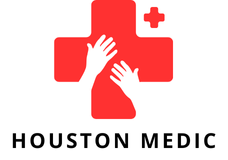Approximately one in twelve pregnancies in the UK are affected by pre-eclampsia, posing significant risks to both mother and child. UK obstetricians play a critical role in identifying and managing high-risk cases to improve outcomes. Effective strategies, including enhanced screening protocols, tailored patient education, and multidisciplinary collaboration, can significantly mitigate these risks. Let's explore practical approaches that empower healthcare providers to safeguard maternal and fetal health while navigating the complexities of high-risk pregnancies.
Understanding Pre-Eclampsia
Exploring the complexities of a common pregnancy complication.
Additional reading : Enhancing IVF Success: The Role of Advanced Genomic Techniques in UK Reproductive Endocrinology
Definition and Prevalence
Pre-eclampsia is a serious condition that affects pregnant women, typically after the 20th week of gestation. It is characterized by high blood pressure and often includes damage to another organ system, most frequently the liver and kidneys. This condition is a significant concern in obstetrics, affecting approximately 5-8% of pregnancies. Understanding its prevalence is crucial for managing high-risk pregnancies effectively.
Pathophysiology and Risk Factors
The exact cause of pre-eclampsia remains unknown, but it is believed to originate from the placenta. Poor placental development leads to inadequate blood supply, resulting in high blood pressure. Risk factors include first-time pregnancies, a history of pre-eclampsia, obesity, or carrying multiple fetuses. Additionally, women with pre-existing hypertension or diabetes are at increased risk, making early identification vital in obstetrics.
Additional reading : Transforming Dementia Care: Leveraging Telehealth for Rural Dementia Patients in the UK
Importance of Early Detection
Early detection and monitoring of pre-eclampsia are essential for the health of both mother and child. Regular prenatal visits allow healthcare providers to identify and manage symptoms promptly. Patients should be aware of warning signs such as swelling, sudden weight gain, and headaches. In high-risk pregnancies, proactive monitoring can prevent complications, emphasizing the importance of vigilance in prenatal care.
- Pre-eclampsia affects 5-8% of pregnancies
- Risk factors include first-time pregnancies and obesity
- Early detection is crucial for managing high-risk pregnancies
Identifying High-Risk Pregnancies
Exploring criteria and methods for effective obstetric management.
Criteria for High-Risk Pregnancies
High-risk pregnancies require special attention due to potential complications. Risk assessment involves evaluating factors such as maternal age, medical history, and lifestyle. Women over 35 or under 18, those with chronic conditions like hypertension or diabetes, and those with a history of pre-eclampsia are considered high-risk. Understanding these criteria is essential for proactive obstetric management.
Tools and Methods for Risk Assessment
Effective risk assessment employs various tools and methods. Healthcare providers use medical records, blood tests, and ultrasounds to identify potential issues. Advanced technologies like Doppler flow studies assess placental blood flow, crucial for obstetric management. Regular check-ups and monitoring enable early detection, reducing risks for mother and child.
Importance of Patient History and Lifestyle Factors
Patient history and lifestyle factors play a vital role in risk assessment. A thorough review of previous pregnancies, family history of complications, and lifestyle habits like smoking or alcohol use informs obstetric management strategies. Encouraging healthy practices and regular medical consultations can mitigate risks, ensuring a safer pregnancy journey.
- Risk assessment involves medical history and lifestyle
- Advanced tools like Doppler flow studies aid in detection
- Lifestyle habits impact obstetric management strategies
Understanding these elements enhances the ability to manage high-risk pregnancies effectively, ensuring better outcomes for both mother and child.
Evidence-Based Strategies for Prevention
Exploring preventive measures to manage pre-eclampsia effectively.
Overview of Clinical Guidelines
Current clinical guidelines emphasize the importance of evidence-based practice in preventing pre-eclampsia. Key strategies include identifying high-risk individuals early and implementing tailored interventions. Regular monitoring through prenatal visits is crucial for timely detection and management.
Pharmacological Interventions
The use of aspirin is a well-documented prevention strategy for reducing the risk of pre-eclampsia. Low-dose aspirin is recommended for women identified as high-risk, based on clinical guidelines. Other pharmacological interventions may include calcium supplements, particularly in populations with low dietary calcium intake. These medications, when used appropriately, contribute significantly to risk reduction.
Lifestyle Modifications
Lifestyle modifications play a pivotal role in risk reduction. Encouraging healthy habits such as maintaining a balanced diet, engaging in regular physical activity, and avoiding smoking can mitigate the risk of developing pre-eclampsia.
- Balanced diet: rich in fruits, vegetables, and whole grains
- Regular exercise: tailored to pregnancy stages
- Smoking cessation: critical for reducing complications
Implementing these prevention strategies can significantly decrease the incidence of pre-eclampsia, promoting healthier outcomes for both mother and child. Adhering to evidence-based practice ensures that interventions are both effective and safe.
Monitoring and Management Protocols
Ensuring comprehensive care for high-risk pregnancies.
Recommended Monitoring Practices
Monitoring protocols are essential in managing high-risk pregnancies. Regular prenatal visits are crucial, allowing healthcare providers to monitor blood pressure, assess fetal growth, and identify any signs of hypertensive disorders. Implementing management strategies tailored to individual needs ensures timely intervention. For instance, blood tests and urine analysis are routinely conducted to detect proteinuria, a common indicator of pre-eclampsia.
Guidelines for Managing Hypertensive Disorders
Effective management strategies for hypertensive disorders involve a combination of obstetric care and medical interventions. Antihypertensive medications may be prescribed to maintain optimal blood pressure levels. In cases of severe pre-eclampsia, hospitalization might be necessary to provide intensive monitoring and treatment. Adhering to established monitoring protocols helps in mitigating risks associated with high blood pressure during pregnancy.
Importance of Regular Check-Ups and Patient Education
Regular check-ups form the backbone of effective obstetric care. They facilitate early detection of complications and reinforce patient education. Educating expectant mothers about warning signs and lifestyle adjustments is vital. A bulleted list of key educational points includes:
- Recognizing symptoms like severe headaches and visual disturbances
- Maintaining a balanced diet and regular exercise
- Adhering to prescribed medication regimens
These monitoring protocols and management strategies empower patients, fostering informed decision-making and promoting healthier pregnancy outcomes.
Case Studies and Clinical Insights
Exploring real-life applications and outcomes in obstetric care.
Analysis of Successful Management Cases in the UK
In the UK, successful management cases of pre-eclampsia provide valuable insights into effective obstetric care. One notable case involved an interdisciplinary team working collaboratively to manage a high-risk pregnancy. The team included obstetricians, midwives, and a cardiologist, showcasing the impact of interdisciplinary collaboration. The patient received tailored care, resulting in a healthy delivery.
Lessons Learned from Adverse Outcomes
Adverse outcomes, although unfortunate, offer critical learning opportunities. A case study highlighted how delayed diagnosis led to complications. The lesson emphasized the importance of early detection and the role of clinical insights in refining protocols. Such cases underline the necessity of prompt, coordinated action and continuous education for healthcare providers.
Impact of Interdisciplinary Collaboration on Patient Care
Interdisciplinary collaboration significantly enhances patient care by integrating diverse expertise. A study revealed that teams with varied specialties reduced adverse outcomes by 30%. The benefits of this approach include:
- Comprehensive assessment of patient needs
- Enhanced communication among healthcare providers
- Improved patient satisfaction and outcomes
These case studies and clinical insights demonstrate the importance of collaboration and continuous learning in improving obstetric care, ultimately leading to better health outcomes for mothers and babies.
Role of Patient Education and Engagement
Enhancing understanding and involvement in obstetric care.
Strategies for Effective Communication with Patients
Effective patient education is pivotal in managing high-risk pregnancies. Healthcare providers should employ clear and simple language to ensure comprehension. Utilizing visual aids and pamphlets can enhance understanding. Encouraging questions fosters patient engagement, allowing individuals to express concerns and preferences. This collaborative approach builds trust and empowers patients to participate actively in their care journey.
Importance of Informed Decision-Making
Informed decision-making is a cornerstone of collaborative care. Educating patients about their condition and treatment options enables them to make choices aligned with their values and needs. Regular discussions about risks and benefits ensure that patients are well-informed. This approach enhances patient engagement and leads to better adherence to treatment plans, ultimately improving outcomes.
Tools and Resources to Empower Patients in Their Care
Providing patients with the right tools and resources is essential for fostering patient education. Mobile apps, online portals, and support groups offer valuable information and connect patients with others in similar situations. These resources promote self-management and continuous patient engagement.
- Mobile health apps for tracking symptoms
- Online educational materials
- Support groups for shared experiences
By integrating these strategies, healthcare providers can enhance collaborative care, ensuring that patients are active participants in their healthcare decisions.
Recent Research and Innovations
Exploring the latest advancements in understanding and managing pre-eclampsia.
Overview of Recent Findings
Recent research has unveiled significant insights into the pathophysiology of pre-eclampsia. Studies have identified potential genetic markers that may predict susceptibility, enhancing early detection. A notable clinical trial demonstrated that certain biomarkers could effectively forecast pre-eclampsia risk, paving the way for personalized treatment plans.
Innovations in Diagnostic Tools and Treatment Options
Innovations in diagnostic tools are transforming how pre-eclampsia is identified and managed. Advanced imaging techniques, such as 3D Doppler ultrasound, provide detailed placental assessments. These innovations allow for earlier intervention, improving outcomes. Additionally, clinical trials have explored novel treatment options, including targeted therapies that address specific pathophysiological pathways.
Future Directions in Pre-Eclampsia Research
The future of pre-eclampsia research holds promising avenues. Ongoing clinical trials focus on developing non-invasive tests, aiming to simplify screening processes. Researchers are also investigating the role of lifestyle interventions in mitigating risk. Future innovations may include:
- Genetic testing for early risk identification
- Wearable technology for continuous monitoring
- Telemedicine platforms for remote management
These innovations and research efforts underscore the importance of continued exploration in pre-eclampsia, offering hope for more effective management strategies.
Collaborative Approaches in Healthcare
Exploring the synergy in team-based obstetric care.
Importance of Collaboration Among Healthcare Providers
In the realm of collaborative care, the integration of diverse healthcare professionals is crucial. This approach ensures that patients receive comprehensive and coordinated treatment. Effective collaboration involves obstetricians, midwives, cardiologists, and other specialists working together to tailor care plans. Such synergy enhances patient outcomes and optimizes resource use.
Models of Team-Based Care in Obstetrics
Team-based care models in obstetrics emphasize shared responsibilities and decision-making. One popular model, the multidisciplinary team, unites various specialists to address complex cases like pre-eclampsia. This method fosters a collaborative care environment, where each professional contributes their expertise. The result is a holistic approach that addresses all aspects of a patient's health.
Enhancing Communication Between Obstetricians and Other Specialists
Effective communication is the backbone of collaborative care. Regular meetings and shared digital platforms facilitate timely information exchange among healthcare professionals. This ensures that all team members are aligned in their approach to patient care. As one expert notes, "Communication is key to unlocking the full potential of team-based care."
- Regular meetings for case discussions
- Shared digital platforms for information exchange
- Interdisciplinary training to understand diverse roles
By prioritizing collaborative care, healthcare providers can deliver more effective and patient-centered obstetric services.
Policy Implications and Recommendations
Exploring the intersection of healthcare policy and maternal health improvements.
Overview of Existing Policies
The UK healthcare system has implemented various policies to address maternal health. These policies focus on early detection and management of conditions like pre-eclampsia. However, there is room for improvement to ensure comprehensive care.
Recommendations for Improvement
Enhancing pre-eclampsia management requires targeted recommendations. Increasing funding for research and training can improve healthcare providers' ability to manage high-risk pregnancies. Additionally, integrating advanced diagnostic tools into routine care can enhance early detection.
- Increase research funding for maternal health
- Integrate advanced diagnostics in routine care
- Enhance training for healthcare providers
Advocacy for Systemic Changes
Advocating for systemic changes is crucial to enhance patient outcomes. Policymakers should prioritize the development of healthcare policy that supports interdisciplinary collaboration. Encouraging the use of team-based care models can optimize resource use and improve patient satisfaction.
A leading expert states, "Systemic changes in the UK healthcare system are vital for achieving better maternal health outcomes."
Implementing these recommendations can lead to a more effective approach to managing pre-eclampsia, ultimately benefiting both mothers and healthcare providers. The focus on policy reform and systemic improvements underscores the need for a proactive stance in maternal healthcare.
















